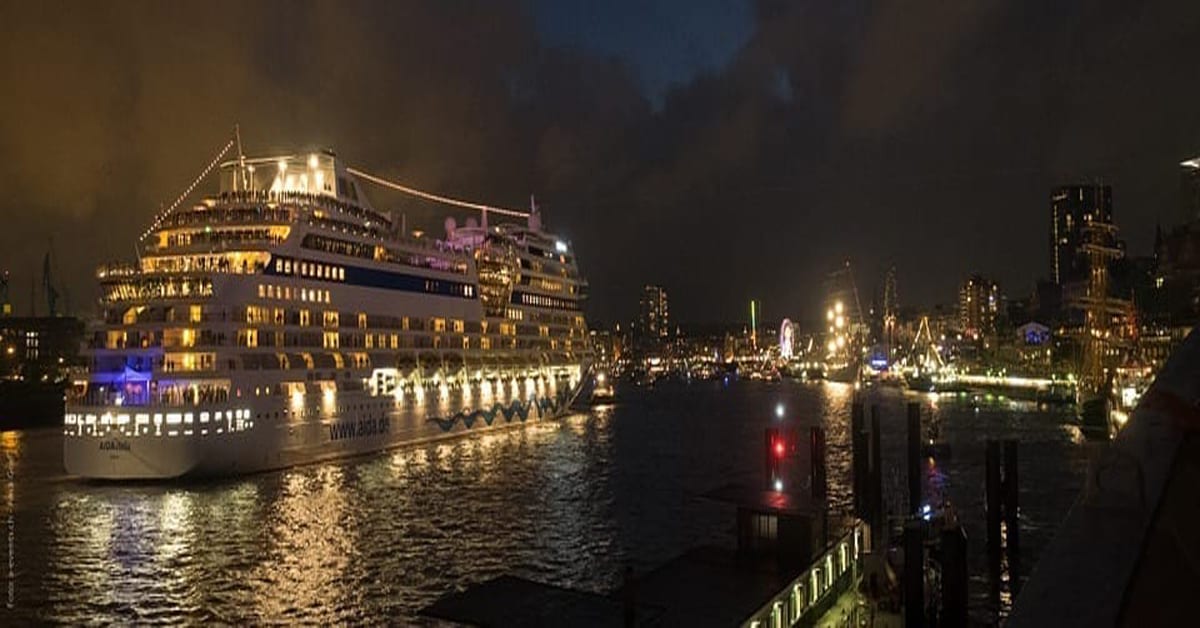Not all have the riches to board cruises, but most can picture a cruise ship life. I mean, who will forget the iconic Jack and Rose of Titanic? Or Captain Stubing and his Pacific Princess crew in the American sitcom The Love Boat? These remarkable film and program, respectively, introduced the cruise industry to the public.
With advancements in maritime technology and enticing advertisements in media, cruises gained the hearts of the masses. But beneath the merry life aboard are perils almost hidden to the naked eye. Is the blinding luxury of cruises worth a try?
What makes cruises so popular?

Before, cruises aren’t made entirely for leisure. Although there are already ships that offer comfort for their passengers, most mainly carry mails and cargo. Only in the mid-1850s when dramatic improvements were made to the way cruises operates. This includes development of hotels inside ships, and elegant accommodations and planned activities. Then on, the industry rolled even further.
In the recent years, the cruise industry stands mighty due to these feats:
Deals and discounts
Contrary to popular beliefs, cruises aren’t entirely pricey. Sure there are high-end cruise lines we can’t afford to pay, but there are always deals and discounts. This happens when cruises needed to be filled before the schedule, or when demand for cruise is lower than usual (hurricane season).
Cruise lines can also add amenities or services instead of lowering the price to increase its value. For instance, instead of only one free coffee a day, they may give a complimentary pastry as their deal.
Here what experts say about cruises:
“Cruises are cheap — you can find getaway weekends for less than a few hundred dollars, making them a terrific value.” Alex Miller of Upgrade Points
“A cruise offers a great value for the price in a well-packaged product ensuring great vacation experience offering multiple destinations, in house accommodation, entertainment, and transportation. It is then presented as a done for your vacation package providing a unique sailing experience.” – Amit Abhishek, Marine Engineer and blogger at Ship Fever
“Great value for the price paid. You can do as much or as little you want, you use the ship as your floating hotel and get to visit several countries in one vacation. Some dining is as good as the best restaurants on land.” – Kyle Bruening, President at Cruise Finder Inc.
All Inclusive
Many cruises are all-inclusive. This means all components are included on the package you paid such as WiFi, sodas, coffee, fitness, dining, or whatever the cruise line offers. What makes this so inviting is that you won’t have to pay extra; nor worry on accumulating bills.
All-inclusive cruises also gives you free food, entertainment and amenities, which may seem a win-win situation for you. With this, vacation vibes is much felt as everything is well-taken care of.
“Most cruises include an all-inclusive component, and especially for Americans, they love having both food, drink, and entertainment included without having to take out a wallet each time.” (Alex Miller, from Upgrade Points)
Food
A cruise ship can be considered a paradise of food. Usually served in buffet, the dishes offered in cruises are prepared by top quality chefs and cooks. They do not just make sophisticated and picture-worthy meals, it also taste heavenly and scrumptious.
Food in cruise ships also caters a variety of world class cuisines. These dishes are meant to satisfy the palate. In addition, they offer an array of options which can be vegan-friendly, kid-friendly, or halal approved.
Multiple destinations
Journey in a cruise is such a heaven sent as passengers can go to places minus the stress. Solo travelling is such a hassle, especially for first-timers as they need to go by their own on landmarks and streets. But in cruise, you sail across destinations, port by port of cities or even countries.
“Rather than having to get yourself between cities, a cruise is your home away from home as you sail between various port cities or countries. You don’t have to worry about getting between them, and can see multiple places on one journey.” (Alex Miller, from Upgrade Points)
Family-Friendly
While cruise lines cater the solo-travelers, families have a special heart in this industry. There are activities where the entire family can bond, or facilities specifically catering a member such as amenities for kids. Activities can be customized or followed as is, depending on the cruise line.
Everything is taken care of
Since cruises are designed to provide the ultimate travel experience, most cruise lines offers passengers the comfort of taking care of everything you need in the voyage. From food to accommodation, entertainment to relaxation—it’s on them. All that’s left for you to do is to enjoy.
“On a cruise, everything is take care of. From shore excursions, to meals, to housekeeping of rooms, there is hardly anything you need to worry about once onboard.” (Alex Miller, from Upgrade Points)
“A cruise offers a great value for the price in a well-packaged product ensuring great vacation experience offering multiple destinations, in house accommodation, entertainment, and transportation. It is then presented as a done for your vacation package providing a unique sailing experience.” (Amit Abhishek, Marine Engineer)
What dangers are there in going on cruises?
Cruises—a lalaland? At a glance, it may be. But the industry is sitting on a number of perils. So before you book a cruise for a future vacation, beware of the dangers you will encounter.
Seasickness
Ships have stabilizers and are engineered to the finest. In addition, the large size of the water vessel will not likely make you dizzy. However, this does not guarantee seasickness cannot occur. You are still susceptible to seasickness depending on how you senses react to visions and sound. So basically, even when you ride on the most stable ship, seasickness is possible.
Deaths on board
Scary as it sounds, but deaths in cruise ships are common. In fact, cruise lines have protocols to handle the dead or even required to have morgues as demises are inevitable. Even if this is the case, taking care of deaths on board is tricky due to deaths happening in international waters or in a ship that flies under the flag of a country with a different standard of laws than the country the cruise ship company is headquartered.
The most common cause of deaths in cruises is old age. But you are in danger of fatal harm in the ship in various ways, including:
- Slip and fall accidents.
- Food poisoning.
- Swimming pool accidents.
- Elevator and escalator accidents.
- Recreational activities.
- Legionnaire’s Disease.
- Drowning.
Criminal Activity
Cruises can also be a hotbed of crime, especially since regulating them is difficult. When you board a cruise ship, you risk falling victim to many crimes, most of which is sexual assault with the rest being homicides, suspicious deaths, missing U.S. nationals, kidnappings, assaults with bodily injury, thefts of more than $10,000, vessel tampering, and sexual assaults. Worse, investigating such crimes is near impossible because of the scene where they occurred.
Disasters
As with any vehicle, you risk being victim to a disaster. Worse, in cruises, passengers are often left to the mercy of the cruise ship crews when disaster strikes.
Some of the worst cruise ship disasters are:
- RMS Titanic sinking (1500 drowned /year 1912)
- SS Eastland tipping over in Chicago (800 drowned /year 1915)
- MS Eastern Star (China-Yangtze River cruise ship) hit by cyclone, capsized and overturned (442 dead or missing /year 2015 June)
- MS Aleksandr Suvorov (Russia-Volga River cruise ship) crashed into a railway bridge girder, still in service (177 killed /year 1983)
- TSMS Lakonia caught fire and sank near Madeira island Portugal (128 drowned /year 1963)
- MS Bulgaria (Russia-Volga River cruise ship) sank in the Kuybyshev Reservoir in Tatarstan, Russia (122 drowned /year 2011)
- Concorde plane crash accident – a French aircraft with 100 Peter Deilmann cruise passengers (booked on MS Deutschland) crashed on takeoff from Paris France, leaving no survivors.
- The ocean liner SS Andrea Doria was rammed by MS Stockholm (now Astoria) on July 25, 1956. A total of 46 people were killed in the collision. The liner capsized and sank on July 26.
- Costa Concordia sinking – hit a rock, capsized, sank near Giglio island Italy (32 drowned /year 2012)
- The terrorist attack on cruise passengers in Tunisia (22 killed /year 2015)
- MS Westerdam passengers were killed in an Alaskan plane crash accident (9 killed /year 2015).
Overflowing Toilet
Other than public health, sanitation in cruise ships is also a dilemma. One example is the overflowing toilet. This is not new in cruise ships, but it’s always unhygienic and inconvenient. It may also post harm to health.
Fights
With hundreds of thousands of people inside a cruise ship, individual differences may be amplified. Because of this, passengers may be involved in a fight. This may invite physical violence which may affect others who are innocent.
Public Health Threat
Since passengers swarm inside a cruise, physical distancing between them is hard to observe. Guidelines also include buffet dining, or sharing of amenities. So when a person has a contagious disease, more likely others will get them too.
In fact, the COVID-19 pandemic spread through the entire world through cruise ships. Jennifer Willy, Editor of Etia.com said: “The impact of coronavirus was very severe on cruise ships. Four passengers died aboard Holland America’s Zaandam, two passengers died aboard the Coral Princess, and another passed away at a hospital after the ship tied up in Miami and many other deadly happenings occurred onboard.”
“According to the cruise ship expert, lots of changes will occur before ships are permitted to resume service. Strict medical protocols were implemented when a series of major cruise liners went into lockdown following outbreaks onboard. Cruise Lines International Association has been working with member cruise lines, such as Carnival and Royal Caribbean, as well as the U.S. government, to produce a framework of such guidelines. Buffet services will also have to retire in future ships due to the virus outbreak. Similarly, dining rooms, entertainment venues, and reservation systems will see some big changes.”
Alex Miller also said, “Because cruises have been near sold out, the amount of people onboard has reached capacity. When you put that amount of people in a confined space, it is essentially a petri dish for germs and the spread of illness. Previously, we’ve seen lots of cases of norovirus — that famous cruise ship bug which spreads like wildfire, but passes just as quickly. Now, in the age of coronavirus, we’re seeing more deadly things spread.”
“The challenge with cruising is there being so many people and the lack of hygiene that’s usually possible on dry land. Cruises will need to add more sanitizer units, more areas to wash hands, and more automated features (such as toilets and sinks) to really counteract the amount of people onboard.“
What are the environmental impacts of each cruise?
Cruise ships are pollutants. Even with sophisticated innovations installed in ships to support ecological practices, they still contribute largely to unwanted waste in air and sea. To explain this, Marine engineer Amit Abhishek shared the ecological impacts brought by cruises.
He said: “Marine engines run on diesel fuel and it is a source of air pollution ( SOx, NOx, Carbon Particles ). With the implication of the latest equipment and methods to contain air pollution, we can reduce them by 60-70% but still 30-40% of emissions will cause air pollution. Further, there are bilge water discharges that cause water pollution mixing oil particles in seawater. The Marpol requires to ensure 15 ppm oil limit, most cruises maintain at 5 ppm but that too means in every 1 million liters of water discharge we also discharge 5 liters of oil.”
Statistics also back up this claim. For instance, a headline reads that “Air quality on cruise ships ’20 times worse’ than in a busy city centre” and 200 times worse compared to a natural fresh air surrounding. A German environmental association—Naturschutzbund Deutshland (NABU)—warns that because of this, passengers are exposed to air that has “60 times higher concentrations of harmful air pollutants.” Exposure to this, heightens risk of getting lung cancer says the World Health Organization (WHO). In simple terms, cruises are deadly.
How can cruises be more sustainable and safer?
To at least minimize their environmental crimes, cruise lines and the companies associated to them should strictly observe eco-protocols, even go beyond current requirements if necessary. They should continuously upgrade their ships and systems to meet sustainable demands.
Amit Abhichek told us this innovations in marine engineering of cruises:
“Recently, cruise lines have become environmentally conscious implying the latest pieces of equipment and methods to reduce pollution, reduce waste, treat sewage, and install solar pannels. Most recently a group of cruise lines takes on this pledge to reduce/eliminate single-use plastics like coffee lids, bags, straw, etc. Some cruise is also experimenting with alternative fuels for a cleaner environment.”
Indeed, a shift is deemed necessary.
If cruises cannot compete in the eco travel market, then people should look into other more responsible forms of travel such as backpacking.
Conclusion
Travelling is part of our lives. But it should not be an accessory to murder the only planet we have. We need to travel responsibly and that means choosing how to travel wisely.
Moreover, be responsible where ever you go. Stay connected with the world by being careful of the impacts behind every action you take, especially on travel. Whatever you do while outside not only affects your fellow passengers. Your actions are felt by the environment the most.





Wow this is such an interesting look at the dangers of cruises in the environment. I’ve never taken one and don’t plan on it.
Oh my goodness, this was a really interesting read! I’ve loved my cruise vacations in the past but this has made me think twice. You’re totally right that the industry needs some major changes. Hopefully they will start taking steps in a more sustainable and safe direction.